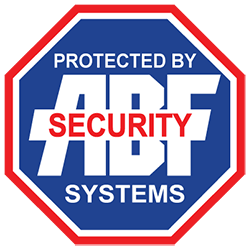The Modern Business Security Challenge?
Every business faces unique security challenges, from protecting valuable inventory in warehouses to securing sensitive areas in office buildings. The traditional method of managing physical keys creates numerous vulnerabilities as they can be copied, lost, or borrowed without authorization. Modern businesses need smarter solutions that provide control, accountability, and flexibility.
Commercial access control systems address these challenges by creating digital barriers that only authorized personnel can pass through. These systems don’t just lock doors; they manage entire security ecosystems, tracking every entry and exit while providing administrators complete control over access permissions.
Understanding Access Control Technology
At its core, a commercial access control system works by verifying credentials before granting entry. When someone presents their credentials to a reader, whether it’s a key card, PIN code, or biometric scan, the system checks those credentials against its database and either grants or denies access based on predetermined permissions.
Key components include:
- Card Readers and Keypads: The interface between users and the system
- Control Panels: The brain that processes access requests
- Electronic Locks: Physical mechanisms that secure entry points
- Management Software: Administrative platforms for configuring users and permissions
The beauty of modern systems lies in their flexibility. You can program different access levels for different employees, restrict access to specific times of day, and even integrate with other security systems for comprehensive protection.
Advanced System Capabilities
ABF Security provides cutting-edge access control solutions that offer comprehensive security management for businesses of all sizes.
Cloud-based management allows you to control your security system from anywhere using a smartphone or web browser. These systems install quickly and can manage thousands of doors with optional cellular backup to ensure continuous operation even during network outages.
Scalable solutions grow with your business, supporting everything from single-door applications to complex multi-building facilities. Advanced software combines access control with photo ID badging, time and attendance tracking, and visitor management capabilities.
Integrated security platforms seamlessly connect with existing security systems, offering mobile credentials, remote lock control, and unified video surveillance. Cloud-based platforms provide real-time management and advanced automation features that reduce false alarms while enhancing overall security.

Addressing Common Business Pain Points
Security Breaches and Unauthorized Access
One of the most significant concerns businesses face is preventing unauthorized entry. Traditional lock-and-key systems offer limited control and no accountability. With access control, every entry attempt is logged, creating a complete audit trail. If someone tries to access an area without proper authorization, the system immediately alerts security personnel.
Employee Management and Accountability
Managing employee access manually becomes increasingly complex as businesses grow. Access control systems streamline this process by allowing administrators to grant or revoke access instantly through software. When employees change roles or leave the company, their access can be immediately modified or terminated, eliminating security gaps.
Operational Efficiency
Modern access control systems significantly improve operational efficiency by automating many manual processes. Employees no longer need to wait for someone to unlock doors or manage physical keys. Integration with time and attendance systems provides accurate records of when employees arrive and leave.
Insurance and Liability Concerns
Businesses with robust access control systems often receive insurance premium discounts. Insurance companies recognize that controlled access reduces the risk of theft, vandalism, and workplace accidents. Some businesses report insurance savings of 15-20% annually after implementing access control systems.
Industry-Specific Solutions
Office Buildings
Office environments require flexible access control that accommodates different employee schedules, visitor management, and after-hours access. Modern systems can automatically unlock common areas during business hours while keeping sensitive areas, like IT rooms and executive offices, restricted. Integration with fire alarm systems ensures automatic door release during emergencies.
Warehouses and Manufacturing
Warehouse environments present unique challenges, including contractor access, dangerous equipment zones, and multiple shift schedules. Access control systems can restrict untrained personnel from hazardous areas while providing detailed logs of who accessed specific zones. This not only improves safety but also helps maintain OSHA compliance.
Schools and Educational Facilities
Educational institutions face the complex challenge of maintaining security while preserving an open learning environment. Access control systems can automatically adjust permissions based on bell schedules, provide visitor management capabilities, and enable rapid lockdown if necessary.
Healthcare Facilities
Healthcare environments require strict access control to protect patient privacy and secure pharmaceutical storage. Systems must comply with HIPAA regulations while providing emergency access capabilities for medical personnel.
Integration with Existing Security Systems
One of the greatest advantages of modern access control is its ability to integrate with other security systems. When access control works together with video surveillance, alarms, and fire safety systems, the result is a comprehensive security ecosystem that responds intelligently to threats.
Integration benefits include:
- Automated Response: Doors can automatically lock during alarm conditions
- Visual Verification: Video cameras can capture footage when access cards are used
- Emergency Protocols: Fire alarms can automatically unlock evacuation routes
- Unified Monitoring: Security teams can manage all systems from a single interface
Understanding the Return on Investment
Commercial access control systems deliver measurable returns through multiple channels. Businesses typically see a 200-400% return on investment within five years through theft reduction, operational efficiency gains, and insurance savings.
Direct cost savings:
- Theft Prevention: Reducing unauthorized access significantly decreases inventory shrinkage
- Insurance Discounts: Many insurers offer 15-20% premium reductions for businesses with access control
- Operational Efficiency: Automated processes reduce administrative overhead by thousands of dollars annually
Risk mitigation:
- Liability Protection: Detailed access logs provide evidence during legal disputes
- Compliance Assurance: Automated systems help maintain regulatory compliance
- Asset Protection: Controlled access protects valuable equipment and sensitive information
Future-Proofing Your Security Investment
Technology continues to evolve, and access control systems must adapt accordingly. Cloud-based systems offer the flexibility to add new features and capabilities without major hardware upgrades. For example, mobile credentials are becoming increasingly popular, allowing employees to use their smartphones as access cards.
Biometric authentication is also gaining traction, providing an additional layer of security through fingerprint or facial recognition. While these technologies offer enhanced security, they must be implemented thoughtfully to address privacy concerns and ensure reliable operation.

Choosing the Right Solution
Selecting the appropriate access control system depends on several factors, including business size, security requirements, budget constraints, and growth projections. Small businesses might benefit from simple card-based systems, while larger enterprises may require sophisticated biometric solutions with extensive integration capabilities.
Working with an experienced security provider like ABF Security ensures that you receive a solution tailored to your specific needs. Our team conducts comprehensive security assessments to identify vulnerabilities and recommend appropriate technologies.
FAQ
1. How long does it typically take to install a commercial access control system?
Installation time varies depending on the complexity of your system and the number of doors. Simple systems with a few doors can be installed in a day, while comprehensive multi-building solutions may take several days. Modern controllers are especially quick to install, with individual units operational within minutes. Our team provides detailed project timelines during the planning phase to minimize disruption to your business operations.
2. Can access control systems work during power outages or network failures?
Yes, modern access control systems include battery backup systems that maintain operation during power outages. Additionally, advanced systems store all programming and user credentials locally to ensure continued functioning even if network connectivity is lost. For critical applications, cellular backup communication ensures the system remains connected to monitoring centers even during network outages.
3. How do access control systems integrate with our existing security cameras and alarm systems?
Integration capabilities depend on the specific systems involved, but most modern access control platforms offer extensive integration options. Our systems can automatically trigger video recording when access cards are used, lock doors during alarm conditions, and provide unified monitoring through a single interface. We conduct compatibility assessments to ensure seamless integration with your existing security infrastructure.
4. What happens if an employee loses their access card or leaves the company?
Lost or compromised cards can be immediately deactivated through the management software, eliminating security risks. When employees leave, their access privileges are instantly revoked across all doors and systems. New cards can be programmed and issued quickly, and temporary access codes can be provided while replacement cards are prepared. This level of control is impossible with traditional key-based systems.
5. How much can we expect to save on insurance premiums with an access control system?
Insurance savings vary by provider and policy, but many businesses report premium reductions of 15-20% after implementing comprehensive access control systems. Insurance companies recognize that controlled access significantly reduces risks of theft, vandalism, and liability claims. We can provide documentation and system specifications to help you work with your insurance provider to secure available discounts.

